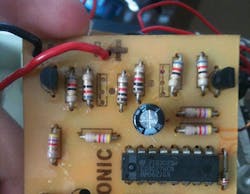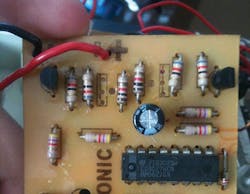Anti-tamper program to protect weapons from theft and reverse engineering
WRIGHT-PATTERSON AFB, Ohio - U.S. Air Force researchers are asking industry for new anti-tamper technologies to help safeguard U.S. military weapon systems from exploitation, reverse engineering, technology theft, and countermeasures. Officials of the Air Force Life Cycle Management Center at Wright-Patterson Air Force Base, Ohio, have issued a broad agency announcement (BAA-AFLCMCXZZ-2016-0001) for the AFLCMC/XZZ Anti-Tamper program.
Military leaders need anti-tamper technology to prevent U.S. military secrets from falling into enemy hands from the capture or loss of sensitive military electronics that contain sensitive information or advanced component technologies. The 5-year program seeks to mature anti-tamper technologies in: secure commercial-off-the-shelf (COTS) architectures; secure COTS processor solutions; anti-tamper sensor technology; and anti-tamper enabling technology.
Secure COTS computing architec- tures involves the exploitation of critical program information from systems assembled from COTS parts. This kind of technology will be com- patible with defense industry open- architecture designs to enable upgrades of unsecure systems to more secure versions. Secure COTS processor solutions involves technologies to enable secure field-programmable gate array (FPGA) software that resides on programmable hardware to protect critical program information at rest and during runtime from known exploitation techniques.
Anti-tamper sensor technology would offer anti-tamper protections to new or legacy military systems, including enclosures, packaging, and sensors that can protect critical program information at the system, board, or component level.
Anti-tamper enabling technology, meanwhile, will support development of secure COTS architecture processors when integrated into new or existing components that can support a secure system.
Air Force experts want to award several contracts, each worth between $500,000 and $2 million, in the AFLCMC/XZZ Anti-Tamper program. The entire program should spend about $49 million. Contractors chosen must have valid security clearances. Companies interested should e-mail questions or submit white papers no later than 30 June 2016 to the Air Force's Timothy Gicale at [email protected]. The Air Force will invite formal proposals for the most promising ideas.
More information is online at www.fbo.gov/notices/c3167f99821779e274542e6550d7efcc.

